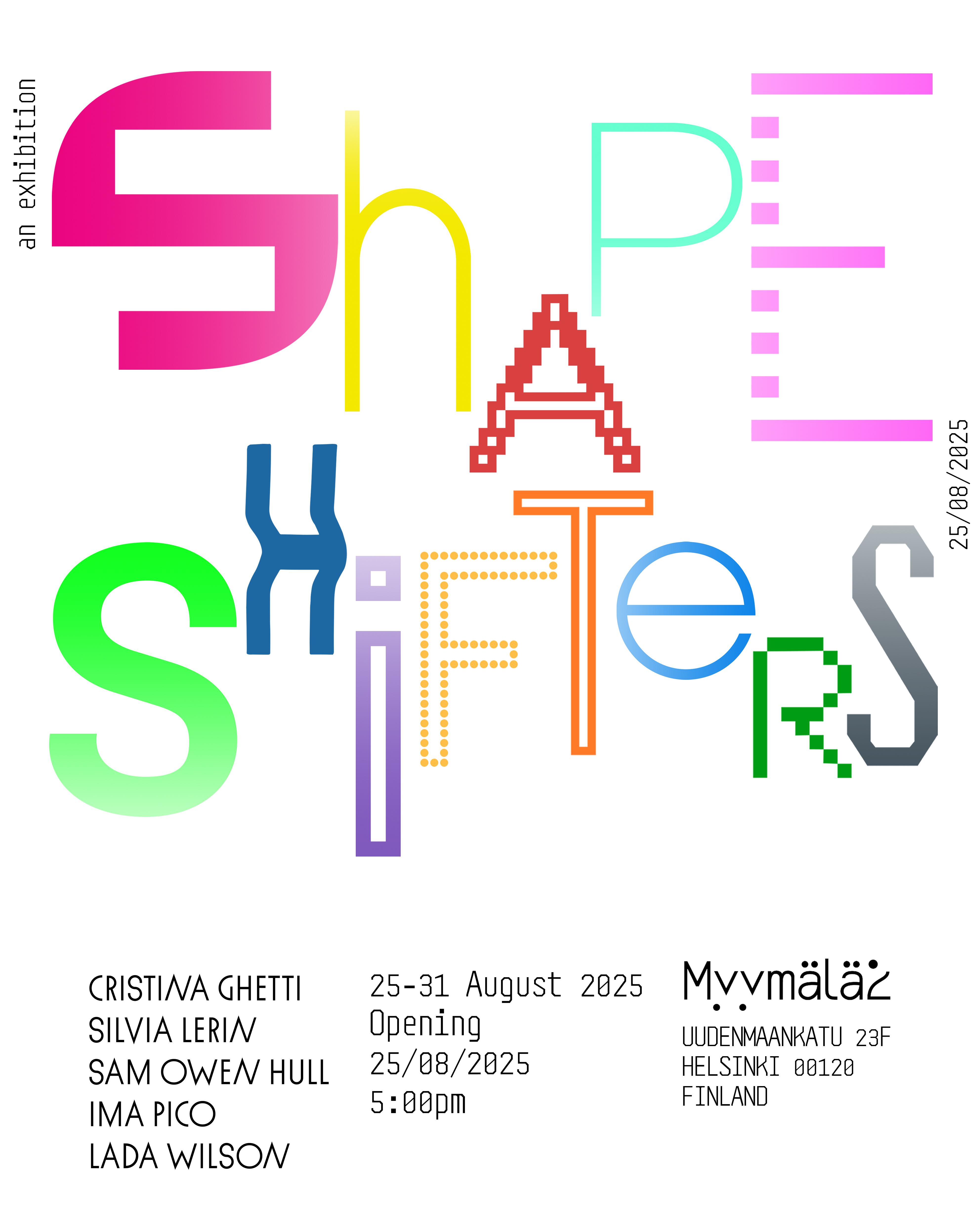
Shape Shifters
Abstraction is always an expression of trust in form. Where the world offers noise, excess or dispersal, abstract art knows how to condense the visible and invisible into structures, rhythms and relations that evoke rather than represent. Wassily Kandinsky affirmed that form is “the outward expression of an inner content”, and in that sense all abstraction becomes an exercise in translation: from thought to appearance, from emotion to colour, from intuition to space.
In this exhibition, abstraction is expressed in a female form – not from a biological or essentialist perspective, but as a plurality of voices that take the abstract to new depths. Five artists, five responsive geographies, interweave their work in a common fabric in which the geometric, the material, the visual, and the earthly come together to demonstrate that abstraction is not a genre closed off in the 20th century avant-garde, but is still a fertile territory, capable of continuing to challenge the viewer and their perceptions.
Cristina Ghetti precisely embodies this extended continuity. Her work locates itself in the genealogy of Op Art and kinetic art, not from nostalgia but involving an active reformulation in dialogue with the digital present. In her we find resonances of Bridget Riley, Vasarely, Soto and Cruz-Diez filtered through a contemporary prism: design software that becomes pictorial surfaces, industrial vinyls that transform into lines of optical vibration and acrylics that introduce reflections and transparencies impossible in traditional canvases.
As Maurice Merleau-Ponty wrote, "seeing is always an act, not the mere reception of stimuli", and in this sense Cristina's artworks force the body to move, to re-establish its perceptual balance in response to surfaces that do not offer a stable point of view. Her abstraction, then, is not limited to the visual but becomes an event, a bodily experience of looking.
Ima Picó, in contrast, follows an opposing route: where Ghetti multiplies vibration, Picó invokes saturation. Her trajectory, linked to the urban and digital languages of the aesthetics of excess, has led to a more contained abstraction, more attentive to formal balance and spaciousness. Geometry calls silently, as visual architecture that occupies an echo chamber. Her rhythmic structures, modulated by repetition and colour, convert the minimal into the intense. In her resonates what Adorno meant when speaking of musical abstraction, "the abstract is not empty, but loaded with content to the limit of its purity." Ima engages purity without falling into coldness, balancing geometric rigour and chromatic warmth, containment and vibration.
Faced with these two approaches, one visual and expanded, the other architectural and contained, Silvia Lerín introduces the material-poetic dimension of painting. Her internationally recognised work addresses the pictorial surface as a territory in tension, where the canvas can fold, tear, wrinkle until it becomes corporeal. In her series, colour behaves like a fluid that wounds and at the same time heals. The abstract becomes organic, loaded with memory. There is in her gesture an echo of the informalists, of Spanish material abstraction. For Silvia Lerín, folding acquires an intimate quality, as if the fabric breathed its own becoming. Her painting does not seek the transparency of the geometric sign but rather the density of the corporeal. Abstraction here is a heartbeat, a wound that unfolds in time.
Lada Wilson works in another format, more linked to the communal and conceptual. Her work converts geometry into shared language, into an alphabet that is not read but experienced. The use of materials like plexiglass, cut paper and typographic assemblages generates open structures that refer to communication, to the idea of a language without a fixed grammar. If for Cristina Ghetti geometry is perceptual vibration and for Ima Picó it is formal containment, for Lada Wilson it is an expanded sign, a construction that suggests collectivity. Her artworks invite the viewer to inhabit abstraction as if it were a meeting space, a place where they become a reader of forms, an interpreter of a visual language.
Finally, Sam Owen Hull situates herself in the terrain of the earthly and gestural. Her abstraction is neither geometric nor material, but intuitive, traced as if capturing subterranean movements or invisible constellations. Her gestures recall roots, rhizomes or maps, establishing a dialogue between the intimate and the universal. In her works, abstraction becomes a means of giving form to the elusive, to what is beneath the surface. Where Cristina Ghetti interrogates perception, Ima Picó proportion, Silvia Lerín matter, and Lada Wilson the sign, Sam Owen Hull works with the pulse, the energy, the trace of what moves in silence.
Five artists, five approaches. The exhibition does not offer a single manifesto, but a polyphonic chorus that shows the richness of contemporary abstraction. All the artists reject decoration and mere formalism; their works invoke a depth that interrogates the gaze, the body, memory and space. As Jacques Rancière reminded us, "the political aspect of art does not reside in its message, but in its capacity to redistribute the sensible." In this sense, what unites these five creatives is precisely that redistribution. Each one, in her own way, pushes against the limits of the abstract to open it to new experiences.
Abstraction, far from having exhausted its force in the avant-garde, reappears here as a plural territory, embodied in feminine voices that know how to engage with history without being trapped by it. There is in these works a common gesture: an affirmation that the abstract continues to be necessary, because we still need forms for the invisible, architectures for the unspeakable, colours for what remains nameless.
Toni Calderón | Art Historian and Critic